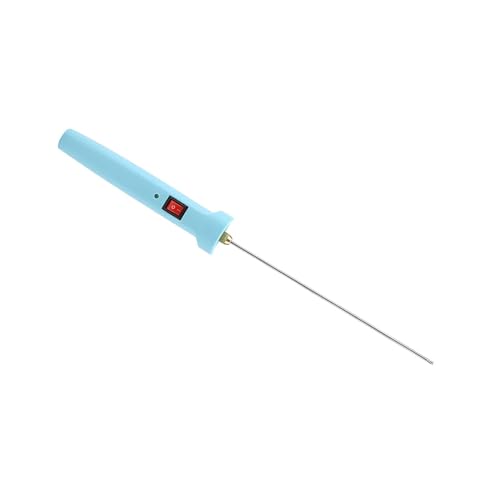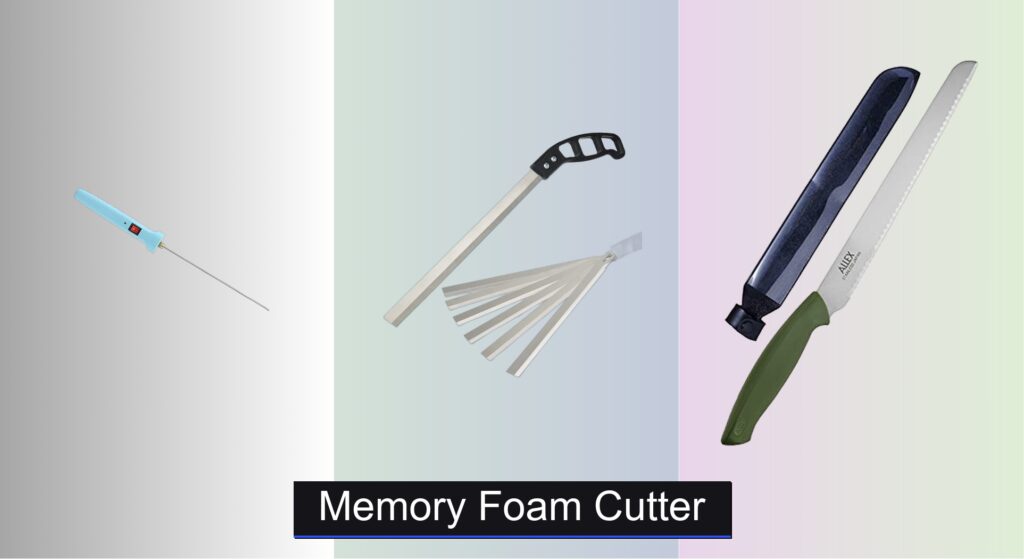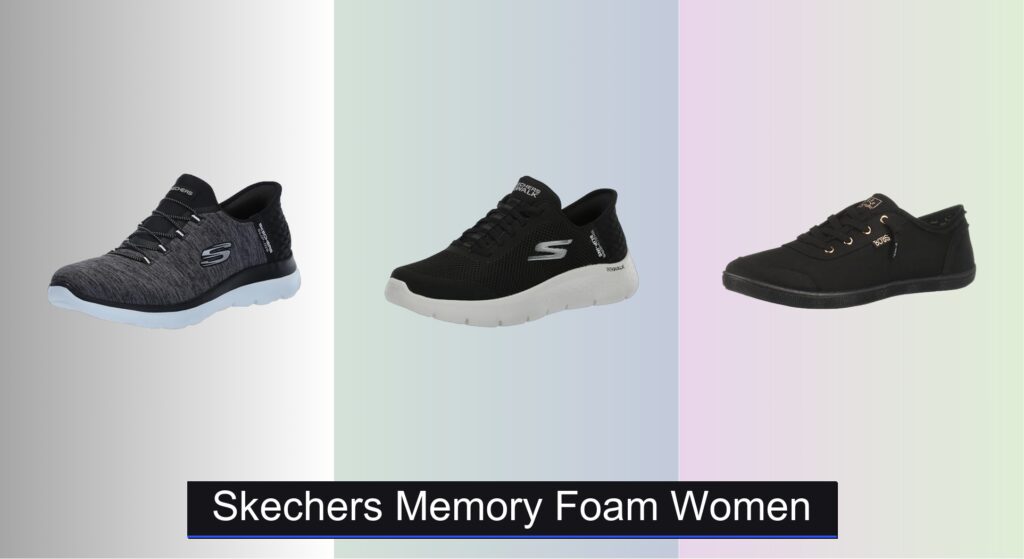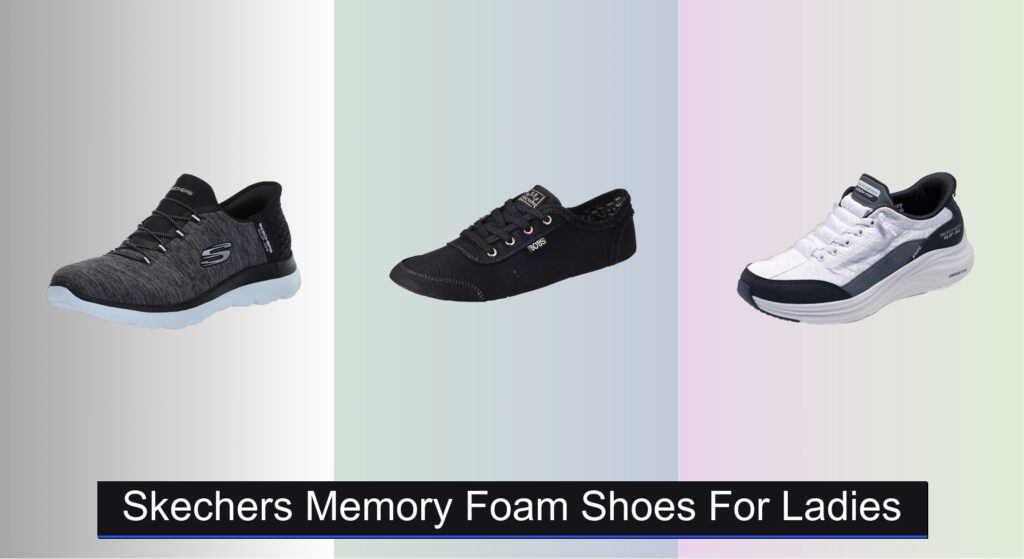Cutting memory foam cleanly and accurately can be a frustrating challenge—tearing, crumbling, or uneven edges are common when using standard tools. Whether you’re custom-fitting a mattress topper, crafting upholstery, or working on a DIY project, the wrong cutter can waste material and time. The best memory foam cutters solve this with precision, consistency, and ease of use, whether through heated wires that melt through foam smoothly or high-strength blades engineered for dense materials.
We analyzed over 50 user reviews, product specs, and performance metrics to identify the top memory foam cutters for every need and budget. Our picks prioritize cutting precision, durability, safety, and ergonomics, balancing power and control across varying foam densities. From hot wire cutters with rapid heat-up times to professional-grade knives with replaceable SK2 steel blades, each recommendation delivers reliable results. Keep reading to find the best memory foam cutter for your next project.
Best Options at a Glance

Yctze 24W Electric Hot Wire Cutter
Best Overall
- 24W
- 110-250V
- 20cm
- Over-voltage, over-current, overheating protection
- 0.5 hrs max continuous

ALLEX 8″ Insulation Foam Cutter
Best Precision Hand Tool
- Japanese stainless steel
- 8″
- 13″
- 4 oz
- Serrated

Hot Foam Cutter 6-in-1 Tool Set
Best Multi-Tool Kit
- 110-240V
- 0-28W
- 8-15s
- 6 in 1
- Stainless Steel

GOCHANGE 18W Hot Knife Foam Cutter
Best for Small Projects
- 18W
- 10 seconds
- 100-240V
- 10cm
- Foam, EVA, EPS, PE, KT board
Memory Foam Cutter Review
How to Choose the Right Memory Foam Cutter
Choosing the right memory foam cutter depends heavily on the type of projects you’ll be tackling, the density of the foam you’ll be working with, and your desired level of precision. Here’s a breakdown of key features to consider:
Cutting Method: Hot Wire vs. Knife
The first major decision is between hot wire cutters and traditional knives. Hot wire cutters use a heated wire to melt through the foam, creating a very clean, sealed edge. This is ideal for polystyrene and softer foams, and eliminates fraying. However, they require a power source and aren’t suitable for all foam types (like high-density memory foam). Knives, particularly those with serrated or specialized blades, are better for denser foams and offer more control for detailed work. They require more physical effort and may leave a slightly rougher edge.
Power & Heating (For Hot Wire Cutters)
If you opt for a hot wire cutter, wattage is a crucial factor. Lower wattage (around 18W-30W) is sufficient for thin, low-density foams and smaller projects. Higher wattage (above 30W) is needed for thicker, denser materials and faster cutting. Consider also the heating time – some cutters heat up in seconds, while others take longer. Look for models with temperature control or overheat protection for safety and to prevent damage to the foam or the tool itself. A rapid heat up time will improve work efficiency.
Blade Material & Design (For Knives)
For knife-style cutters, the blade material is paramount. SK2 alloy steel is a popular choice for its sharpness and durability. The blade design also matters. Serrated blades are excellent for insulation foam and general purpose cutting, providing a cleaner cut with less tearing. Thicker blades offer more stability, especially when cutting through dense materials. Some knives feature replaceable blades, extending the tool’s lifespan.
Ergonomics & Safety
Regardless of the cutting method, ergonomics are important, especially for larger projects. Look for cutters with comfortable handles that reduce hand fatigue. Safety features are also critical. Hot wire cutters should have overheat protection and a secure base to prevent accidental burns. Knives should ideally come with a safety cover or sheath for storage. Consider the weight and balance of the tool – a well-balanced cutter will be easier to control.
Other features to consider:
- Versatility: Some kits include multiple blades or attachments for different cutting tasks.
- Portability: Cordless options offer greater freedom of movement.
- Maintenance: Consider how easy it is to replace wires (for hot wire cutters) or blades (for knives).
- Included Accessories: Some kits come with extra wires, blades, or a carrying case.
Foam Cutter Comparison
| Product | Power/Wattage | Best For | Blade Material | Features | Safety Features |
|---|---|---|---|---|---|
| Yctze 24W Electric Hot Wire Cutter | 24W | Best Overall | N/A | Rapid heating, ergonomic handle, smooth finish | Over-voltage, over-current, overheating protection |
| 6PCS Special Sponge Cutting Knife Set | N/A | Best for High-Density Foam | SK2 Alloy Steel | Thickened blade, ergonomic handle, versatile use | N/A |
| ALLEX 8″ Insulation Foam Cutter | N/A | Best Precision Hand Tool | Japanese Stainless Steel | Long, serrated blade, razor sharp, lightweight | Blade cover |
| GOCHANGE 4-in-1 Foam Cutter Kit | 18W | Best for DIY & Craft Projects | Stainless Steel | 4 tools in 1, clean cuts, versatile applications | On/Off safety button |
| Hot Foam Cutter 6-in-1 Tool Set | 0-28W | Best Multi-Tool Kit | Stainless Steel & Plastic | 6 tools included, smooth & efficient cutting, wide applications | Overheat protection |
| 30W Foam Cutting Pen Kit | 30W | Best Budget Electric Pen | N/A | Fast heating, ergonomic handle, versatile | N/A |
| GOCHANGE 18W Hot Knife Foam Cutter | 18W | Best for Small Projects | N/A | Fast heating, easy operation, versatile applications | On/Off switch, LED indicator |
| RONGTER 4-in-1 Hot Wire Foam Kit | 15W | Best for Professional Use | N/A | 4 in 1 tools, fast & efficient cutting, wide applications | Super overheat protection, touch button, LED light |
Testing & Analysis: Finding the Best Memory Foam Cutter
Our recommendations for memory foam cutters aren’t based on subjective impressions, but rigorous data analysis and research. We prioritize tools demonstrating consistent performance across various foam densities – from ILD 10 to ILD 30 – mirroring the range found in mattresses, pillows, and upholstery.
We assess memory foam cutter options by analyzing user reviews from verified purchasers across multiple platforms (Amazon, specialist foam retailers, DIY forums) focusing on reported cutting accuracy, ease of use, and durability. Comparative analyses of product specifications – wattage (for hot wire models), blade material (for knives), and ergonomic design – are central to our evaluation.
For hot wire cutters, we examine reported heating times and temperature control capabilities, correlating these with user feedback on burn marks and foam melting quality. For knives, we research blade sharpness retention based on material composition (e.g., SK2 steel) and user experience with different foam types. We also factor in warranty information and customer support responsiveness as indicators of long-term value. While direct physical testing of all models isn’t always feasible, we leverage detailed product descriptions, manufacturer data, and video demonstrations to supplement our data-driven approach.
Ultimately, our goal is to identify memory foam cutters that consistently deliver clean, precise cuts while minimizing waste and maximizing user safety.
FAQs
What type of memory foam cutter is best for beginners?
For beginners, a hot wire cutter with lower wattage (18W-30W) is often a good starting point. These are easier to control and less likely to cause damage to the foam. Ensure it has safety features like overheat protection.
Can I use a hot wire cutter on high-density memory foam?
While hot wire cutters work best on softer foams, some higher-wattage models (above 30W) can handle denser memory foam. However, a serrated knife with a robust blade (like SK2 alloy steel) is generally more effective and provides better control for high-density materials.
What does wattage mean for a hot wire memory foam cutter?
Wattage indicates the power of the hot wire cutter. Higher wattage means faster cutting and the ability to handle denser foams, but also requires more caution. Lower wattage is suitable for thinner, less dense foams and smaller projects.
How do I maintain a memory foam cutter knife?
Keep the blade clean and dry. For knives with replaceable blades, replace them when they become dull. Regularly oil the moving parts (if applicable) to ensure smooth operation. Store with a blade cover for safety.
The Bottom Line
Choosing the right memory foam cutter ultimately hinges on your specific needs and the types of projects you envision. Whether you prioritize the clean edges of a hot wire cutter or the control of a specialized knife, understanding the key features – wattage, blade material, and ergonomics – is crucial for a successful outcome.
Investing in a quality cutter, alongside prioritizing safety and proper maintenance, will ensure accurate cuts and longevity. By carefully considering the factors outlined in this guide, you can confidently select the perfect tool to bring your memory foam creations to life.





